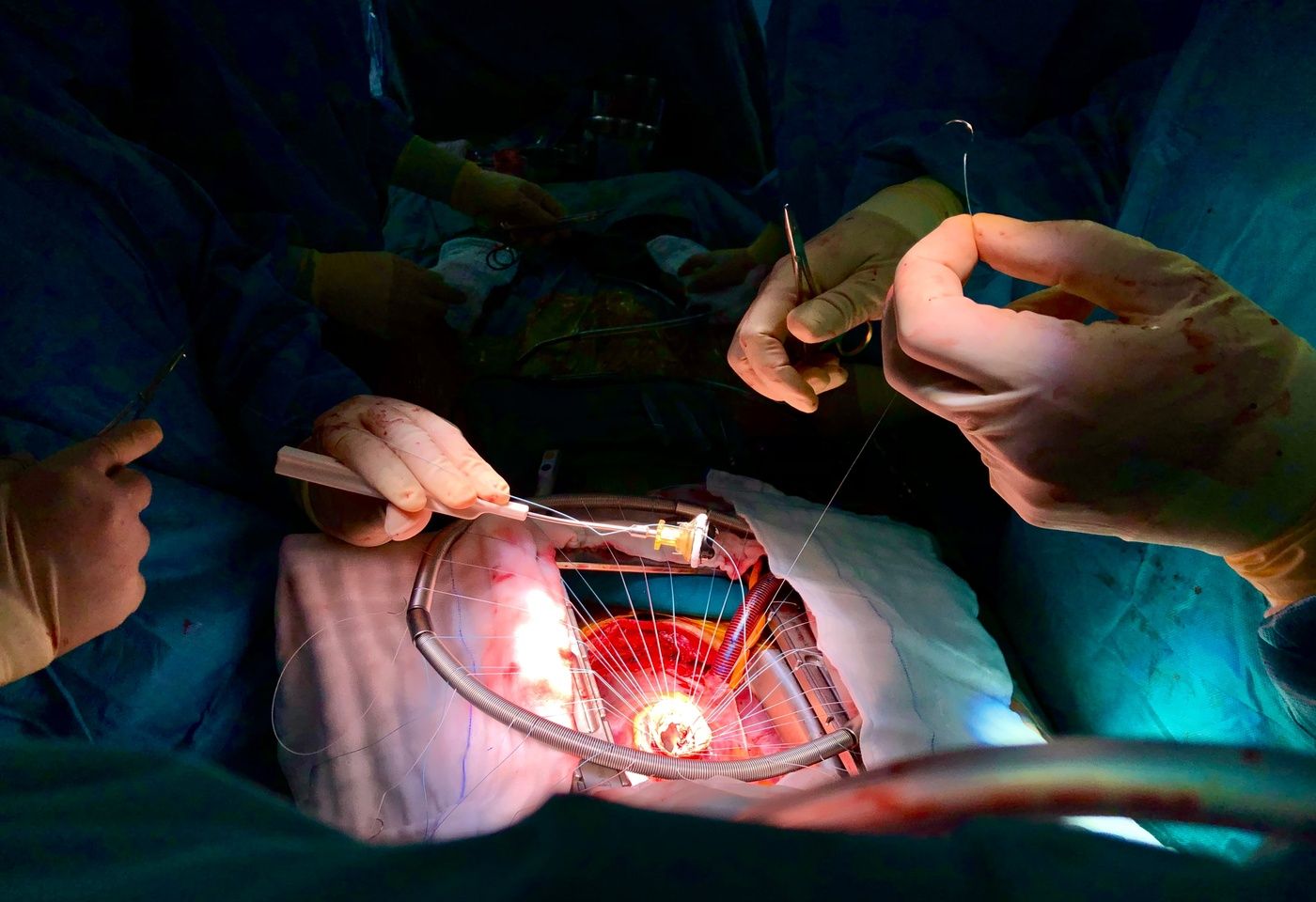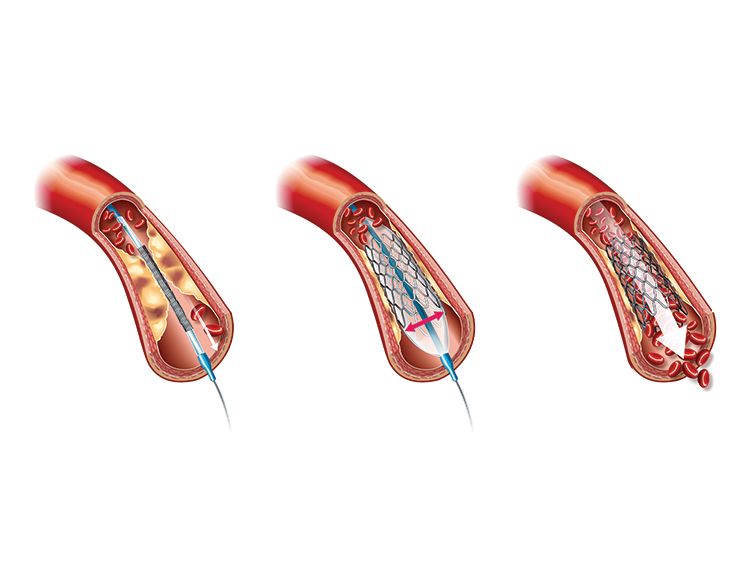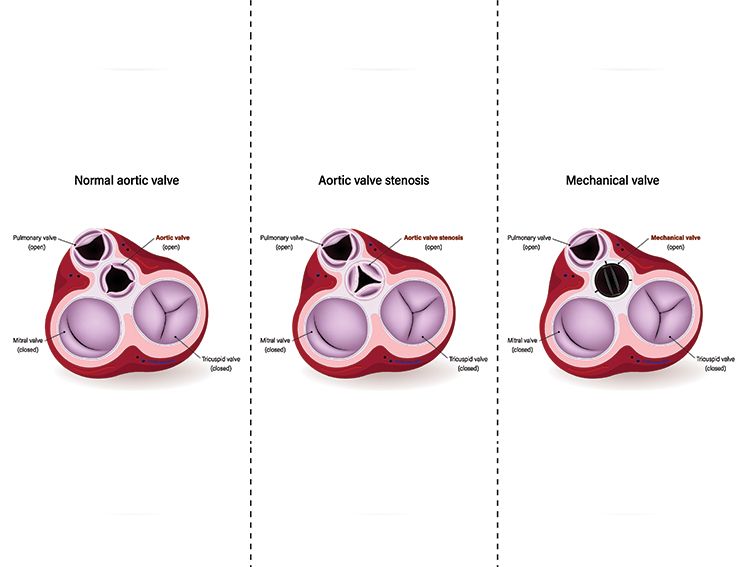
Mechanical Heart Valves - Understanding their role in Heart Valve Replacement
Introduction
While your age plays an important role in choosing the right mechanical heart valves for your heart valve replacement surgery, doctors consider many other factors, too. These include your overall health, heart structure, risks associated with different artificial heart valves, the types of heart valves, their suitability in patient care, and their preferences. This comprehensive approach ensures you receive the best cardiac valve replacement options for your specific situation. The type of treatment and the valve have long-term and short-term effects on the postoperative life of the patient. They are one of the deciding factors for the quality of life; a patient may expect a post-valve replacement, requiring careful consideration to make an informed decision.
Replacement Heart Valve
When a diseased valve cannot be repaired, or all the possible alternatives to treat the diseased valve are exhausted without desirable results, heart valve replacement becomes a must. The heart valve replacement surgery could be an open or a minimally invasive transcatheter valve replacement.
Once the decision to undergo treatment for the diseased valve is reached, the next step is to decide the type of replacement valve in conjunction with the treatment and other factors associated with the treatment's safety, efficacy, and clinically positive outcomes.
A replacement valve is a valve, either a tissue or a mechanical valve, that is used to replace the diseased or damaged heart valve. These valves could be-
- Tissue valve- A tissue valve is derived from animal tissue like bovine(cow), equine (horse) porcine (pig), or maybe a human donor valve from human tissue. A tissue valve is called a bioprosthetic or a biological valve. The human donor valve is known as an allograft or a homograft. The tissue valve lasts for approx. ten to twenty years after its placement. Tissue heart valves have a stent (scaffold) inside with the leaflets mounted externally or internally with respect to the stent. An extended ring of knitted fabric/ polyester is present around the base of the stent and this part is sewn into the heart to seat the valve.
- Mechanical valve- Mechanical or manufactured valves are made of carbon, titanium, or other sturdy materials. These mechanical valves are extremely durable and are designed to last longer, which is why they're often the preferred choice for younger patients needing heart valve replacement surgery. A mechanical heart valve consists of two moving parts (called leaflets) inside a metal ring. The ring has a special fabric edge that surgeons sew directly into the heart muscle to secure the new valve in place.[1]
What is Optimal Replacement Valve Type?
The success of heart valve replacement depends upon the clinical outcome of patients in terms of the durability, thromboresistance, implantability, and hemodynamics (heart pumping and unhindered blood circulation) of the replaced valve and how effectively the prosthetic valve mimics the native or original valve. The optimal valve aims to provide high longevity, safe implantability, high resistance to thrombosis (blood clots), and stable hemodynamics post-replacement.
Tissue valve v/s Mechanical valve
Choosing the most appropriate valve for replacement requires discussion with the healthcare provider about the treatment and the valve options, the associated risks, the compatibility and suitability of each treatment and valve, and the postoperative outcomes.
Tissue valves are used in open surgery and minimally invasive transcatheter valve replacement. They are considered less durable than mechanical valves, which can last for the rest of the patient's life. The durability of mechanical valves makes them more suitable for young patients undergoing valve replacement, often ruling out the need for re-operation to replace the valve.
The main consideration with mechanical heart valves is that you'll need to take blood-thinning medication for life to prevent blood clots.[2] This is why when comparing mechanical vs tissue valve options, doctors often recommend tissue valves for older patients who may have a higher risk of bleeding complications from blood thinners.[2][3] However, for younger patients, mechanical heart valves are typically preferred because they last longer significantly reduce the likelihood of needing another valve replacement surgery later in life.[3]
In cases of patients already on blood thinning therapy of warfarin for another heart problem like deep-vein thrombosis or atrial fibrillation, a mechanical valve is the right option.
Types of Mechanical Valve
The types of mechanical heart valves are –
- The tilting disc mechanical valve - The second-generation mechanical valve has a titling circular occluder (a device that locks the hole in the heart) disc at the center. The metal ring of the valve is held by suturing it to the fabric surrounding the ring. The two supports, the inlet strut, and the outlet strut, hold the disc to flexibly open and close with every pumping of the blood through the valve.
- Bi-leaflet mechanical heart valves - are the most common type of artificial heart valves used today. These valves have two half-circle-shaped flaps (leaflets) that open and close like doors to control blood flow. The leaflets are connected to small supports called struts, which allow them to move smoothly with each heartbeat. Bi-leaflet mechanical valves provide smoother and more natural blood flow than the caged ball and tilting disc valves.[5][6]
Mechanical Heart Valve and its Role in Aortic Valve Replacement
Heart valve replacement is a significant medical decision and needs careful consideration. Out of the four heart valves, Aortic and Mitral valves are the two standard valves that generally require replacement. However, the Mitral valve mostly requires repair, while it is more common to replace an Aortic valve. Aortic valve replacement treats the diseased aortic valve (the valve connecting the left ventricle and the Aorta, the largest artery carrying blood away from the heart) by replacing the native valve with the new valve.
Aortic Stenosis is now not confined to older people, with rising cases of young patients suffering from narrowing and blockage of aortic valve due to sedentary lifestyle, stress, obesity, heredity, birth complications, or unhealthy diet.
Studies suggest that for Aortic valve replacement in patients under 50, a mechanical valve is preferred due to its durability and strength. A mechanical heart valve's longevity rules out the need for future valve replacement, as in the case of a tissue valve with a life span of 10-15 years. The valve is ideal for patients already on blood thinners for other cardiovascular diseases. Whether an open surgery or TAVR, mechanical valve dispenses with the need for future medical interventions, thus ensuring a smooth, normal, and healthy life after valve replacement for the rest of the life, provided one is regular with the blood thinning therapy to prevent blot clots. Using a suitable mechanical valve with smooth buffering can provide a quieter functioning of the valve, thus taking care of the click sound associated with the opening and closing of its leaflets.
Preparation and Recovery
As committed professionals, doctors do their job efficiently and responsibly in the operating theatre. Proper preoperative preparation and postoperative care are the most vital aspects of any treatment for speedy and healthy recovery. Going into the operative room well-informed about the treatment one is undergoing is half the battle won. The remaining half is when the patient or the caregiver takes accountability for the aftercare routine, follow-up, proper postoperative pain management, and care.
Preparation
Preparing for your heart valve replacement surgery with mechanical heart valves requires thorough planning. Start by learning everything you can about the procedure, including the different cardiac valve replacement options available and what to expect during recovery.
Before your surgery, review all your current medications with your doctor - some may need to be stopped or adjusted, especially if you're switching to mechanical heart valves that require blood thinners. Your surgical team will provide specific guidelines for pre-surgery diet and exercise. Don't hesitate to ask detailed questions about your recovery timeline, pain management strategies, medication schedules (particularly important with artificial heart valves), wound care instructions, and any activity restrictions you'll need to follow.
Recovery
- Follow your doctor's instructions and advice.
- Ensure timely follow-up with your doctor for wound dressing and check-ups.
- Observe proper hygiene and wound care protocol and instructions.
- Incorporate a healthy and nutritious diet plan to fuel healthy growth and repair of cells.
- Take adequate rest for a speedy, fast recovery.
Stay positive.
MILTONIA from Meril
MILTONIA is a bi-leaflet mechanical heart valve from Meril with-
- High-performance material of pyrolytic carbon that guarantees excellent biocompatibility and superior safety.
- Suspended leaflets that enable fast opening and closing of the leaflets for the blood to flow sufficiently as per the physiological need of the patient.
- Smooth buffering that provides quieter functioning of the valve, reducing the leaflet's opening and closing sound.
- Open pivot design ensures a large opening and also reduces shear stress on the blood cells, thus minimizing damage to the cells. It also helps in ensuring passive washing of the hinge area and hence prevents blood clot formation.
Conclusion
Choosing between mechanical heart valves and other cardiac valve replacement options is a decision that depends on patient’s unique circumstances. Each type of artificial heart valve has specific advantages - mechanical heart valves offer exceptional durability and long lasting performance, while tissue valves usually do not require long-term blood-thinning medication but they tend to wear out over time and may need to be replaced.[7][8]
Your heart valve replacement surgery, like any major procedure, involves both risks and significant benefits. While complications such as infection, bleeding, or blood clots are possible, the benefits are life-changing: relief from symptoms like shortness of breath and chest pain, improved heart function, and the ability to return to activities you enjoy.[7][8]
The key to successful outcomes with mechanical heart valves lies in being well-informed about your options. Work closely with your cardiac team to understand the mechanical vs tissue valve comparison, discuss your lifestyle and preferences, and create a plan that's right for you. Remember, many people live full, active lives with mechanical heart valves - with proper care and regular follow-ups, you can too.[7][8]



